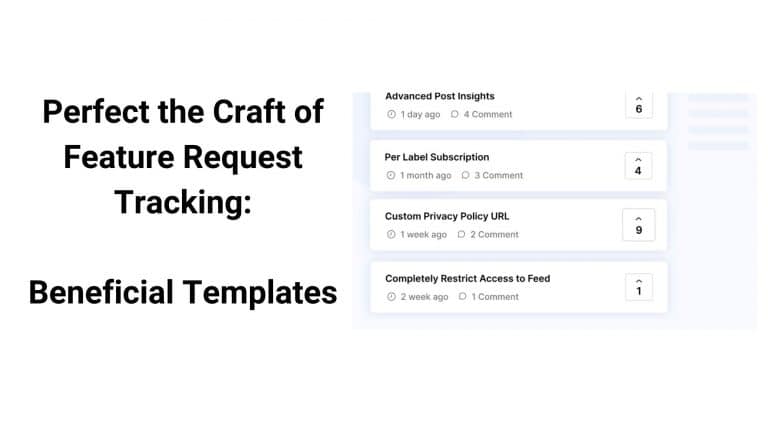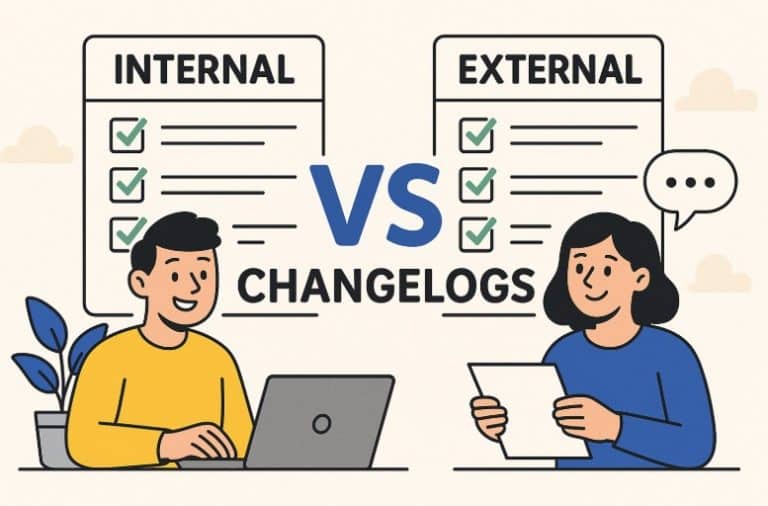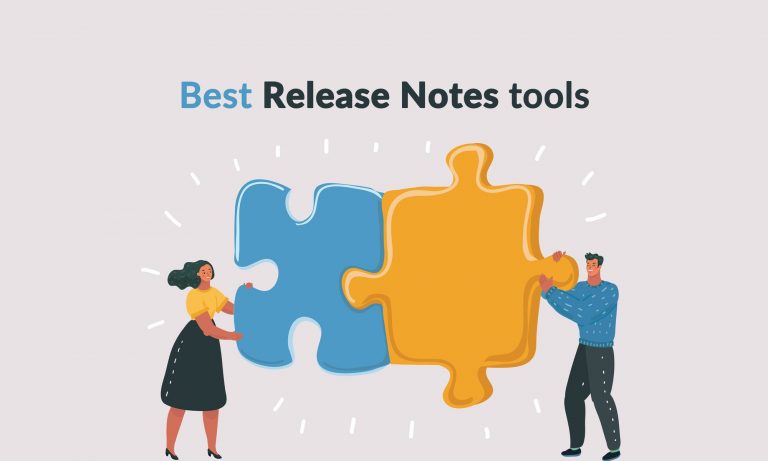Feature requests are like little seeds of opportunity and growth. They have the potential to grow into something that enhances your product and improves user experience.
Unfortunately, not all feature requests will be able to germinate. It’s not always that the feature request is bad, it’s just that sometimes your product or service isn’t the ideal climate for it. Or it’s not in season yet.
Just as a gardener must carefully choose which seed to spend time cultivating, your company has to pick and choose which feature requests to plant and which to say no to.
Learning how to say no to feature requests without uprooting the faith of the users making the requests may seem like a delicate operation, but when done correctly can strengthen your brand and consumer reach
Table of Contents
- Things To Do Before You Deny Feature Requests
- Reasons You Might Say “No” to a Feature Request
- 8 Recommendations for Breaking the News When Saying “No” to a Feature Request
- Take Advantage of AnnounceKit’s All-in-One Feature Request Software To Manage Feature Requests and Make It Easier To Say No When You Have To
Things To Do Before You Deny Feature Requests
As a Software as a Service (SaaS) provider, you’re likely getting a lot of service requests from customers looking to improve their experience and your product. Not all of them are going to be good, but this doesn’t mean they should be ignored.
To first learn how to say no to feature requests, you’ll need to make sure that all of your bases are covered to make the “no” process a little easier and more productive
Thoughtfully Construct a System for Feature Request Collection
If your team has issues sorting through and responding to feature requests, imagine how your user must feel.
Feature requests should be manually sorted by type and frequency to avoid sorting through duplicate and in-progress requests. By creating a streamlined system where users can vote and comment on other users’ feature requests, you can help users mobilize and emphasize specific feature requests. This will help your developer team better prioritize which features they need to improve or create.
Without a thoughtfully constructed system for feature request collection and management:
- Your customers may feel underappreciated and ignored.
- Your product roadmap might be underdeveloped.
- Valuable feedback and suggestions may slip through the cracks.
You can easily collect and store feature requests by adding AnnounceKit’s “suggest feature” feature to your widgets and feedback page. With our assistance, you can also:
- Enable your community to view, vote on, and comment on other feature suggestions.
- Quickly add highly voted features to your roadmap.
- Make new decisions based on popular feature requests and share them with your users via a product roadmap.
- Use an approval system that only allows approved requests and comments to be viewed.
- Use the “Generate Ticket” function to have feature requests analyzed by AI to obtain a more meaningful and clear developer ticket.
AnnounceKit has created a platform that makes feature request management and collection simple and streamlined. Stop trying to read your users’ minds and take direct advantage of consumer wants and whims with AnnounceKit.

Quick Setup, Easy to Use, and Many Integrations
Manage your product announcements from a single place and easily distribute them
across multiple channels.
Build Trust
Net retention is the core driver of sales and growth. SaaS companies that put more attention and focus on retaining current customers tend to achieve higher growth than those concentrated on netting new ones.
Research has found that companies that invest in postsale constructs such as strong pricing and product support typically result in median net retention rates (NRR) of 120% or more. This means that SaaS businesses that invest in customer success, care, and professional services can be able to deliver 20% growth every year without even adding a single new customer.
Why is this?
Because by neglecting current customers, you add more costs in the long run due to:
- Higher churn rates
- Lower cross-sell and upsell
- More pressure on the sales team
It’s not a surprising fact that the investment costs thrown at reeling in new users are 5 to 25 percent more than the costs spent on retaining current ones.
When you build a rapport of trust and appreciation with your clients, you’ll retain them better. Investing time and learning how to say no to feature requests will help you build trust between your product, company, and clients resulting in better NRR and annual growth rates.
You can build trust while gently saying no to feature requests by showing the customer you value their feedback and you wish to understand their issue better. Ask questions that are focused on how the feature would better the product for them.
Lead With Clarity
You want to reach a nexus with your users, where your goals and product vision is clear.
Your branding sets customer expectations. If your company’s values and mission lack clarity, your users will not be equipped to make user requests that are realistic and in line with your company’s modus operandi.
When a customer asks for a feature that would only affect a small portion of your users or a feature that solves a problem that doesn’t exist, instead of saying, “We have no intent on creating that feature because it is unnecessary.” Ask them questions to try to find out why they may be making this feature request and try to see if your product already has a similar feature that can solve their problem.
Ensure that your consumers have a clear understanding of your product and brand by providing quality resources on your product page and website.
Brand clarity could be the feature that tips the scales towards you over an equal competitor. According to a study by Accenture, 63% of global consumers prefer to buy goods and services from companies with a clear branding and purpose that reflects their personal values and beliefs.
Prioritize Timeliness
Mediocre companies shy away from negative feedback. High-achieving companies use it as a tool for consumer loyalty, retention, and product growth. To keep users engaged and satisfied, you’ll need to engage and respond to feedback promptly, even if it is a feature request that you are going to say no to.
Research by Reviewtracker has found that 53% of customers expect a response within seven days and 45% of customers are more than dissatisfied if they don’t receive a response within a week.
In the SaaS industry, answering customer feedback is crucial to reducing churn rates and increasing net retention rates. If you’re experiencing a large influx of feature requests, it may seem near impossible to field all of them appropriately and on time.
Instead of trying to cull the onslaught of requests as they come in, find ways to manage feature requests so that it is easier to respond to each of them.
By allowing your users to vote on similar feature requests, you decrease the likelihood of duplicate requests and the time spent individually replying to each one. Keep a clear product roadmap so that you can quickly or automatically reply to the feature requests of features that are already in development.
Keep looking for ways to improve your user feedback response times with AnnouceKit.
AnnounceKit allows its users to utilize an AI function that can create valuable responses, release notes, and announcements. With our software, you can spend less time writing and more time reviewing and prioritizing feature requests.
Reasons You Might Say “No” to a Feature Request
It can be hard to pinpoint how to say “no” to feature requests if you do not have an idea of why you might need to say no. There are four reasons you might need to say “no” to a feature request, which include:
- The feature is already in development.
- The feature would not be suitable for the product.
- The feature request addresses a problem that does exist.
- The feature would make your product into something that does not align with your company’s brand or vision.
8 Recommendations for Breaking the News When Saying “No” to a Feature Request
You want to break the news to your users while still keeping their loyalty and business. By positively responding to feedback, even if you are going to say no to the request, you can:
- Build stronger relationships with your users.
- Protect your reputation and brand loyalty.
- Attempt to meet all user expectations.
- Collect more positive user reviews and improve your user ratings.
Today’s consumers put a heavy emphasis on feeling heard. According to Industry Analysts, 70% of the general user’s journey is dependent on the level at which they are feeling heard and how they are being treated.
You may not think it, but your user retention and satisfaction may come down to how well you know how to say no to feature requests.
#1: Show Appreciation
Ensure that your customers know that you appreciate their feedback and acknowledge how valuable it is.
Research by The Rockefeller Corporation found that roughly 82% of customers will leave if they feel underappreciated by a company.
Even if you can’t immediately address a feature request, you can create a generic individual or automatic reply that encapsulates your appreciation while letting your users know your team is working on analyzing their feature requests.
#2: Choose the Right Tone
Aim for responses that exude respect and empathy, both help build trust and rapport with users even if they’re submitting a feature request out of dissatisfaction. Remember to avoid being short and defensive.
One survey revealed that 86% of consumers report feeling more loyal to brands that exhibit a deep understanding of their opinions, priorities, and preferences.
Keep away from using phrases like:
- This is not a good idea.
- We can never make this happen.
- We hear this all the time.
#3: Give a Clear Explanation
If you’re going to say no to a client or customer, you should offer a good explanation as to why.
Some users may have come up with the idea that a certain feature would vastly improve their experience, without understanding why the feature may not actually be feasible or work in reality. If you don’t explain why their feature request isn’t possible or realistic, they’re going to assume their user experience just doesn’t matter to you.
Give a good clear explanation for the “no” and be sure to answer any follow-up questions the user has after.
Instead of saying, “This feature will not be added soon”
Say, “Thank you for your feedback and engagement in our product/service. We currently are working on features X and Y so our resources may be restricted until the end of this quarter. These features will benefit you because of X, Y, and Z. We will happily revisit your request when resources become available. Thank you and let us know if you have any questions.”
#4: Share Your Vision
Be clear about your company’s goals, priorities, and mission when learning how to say no to feature requests. The way you share your vision will help enlighten users as to why their feature request might not work out for your product.
Emphasize your current goals and priorities, while addressing their feature request. This will help you clarify what your current intentions and focus will continue to be about in your future endeavors.
#5: Be Honest
Don’t promise your users features that you do not intend to create.
It’s unethical, and failure to meet customer expectations on ethics often elicits a strong rebuke. Roughly 42% of consumers have reported doing business with companies they deem unethical.
Users value honesty and transparency. Monopolize on that by letting them know that you will keep their request in mind. Try to relate what you’re currently working on with their requests if you can. If their request is something your company intends to work on in the future, let them know and utilize a product roadmap to keep them informed along the way.
#6: Offer Alternatives
Don’t just leave it at “no.” Offer alternative solutions and features that may help address their concerns or increase the quality of their experience as well. Try to peer into their minds to see what they really want out of the feature request.
Use questions to try to draw out how/why their feature request would improve their experience, like:
- Can I ask how important this feature request is to your user experience?
- That is an interesting idea, would this feature help as a workaround?
- Other customers have found this helpful, could you try to…?
- We do not have this feature request, but could you tell me what it would achieve for you?
Once you have a clearer picture of what they want, you can find a solution that will leave them feeling understood and satisfied.
#7: Provide Closure
Don’t leave the feedback loop open-ended. It is crucial that you not only address the user feature request, but you make sure to resolve whatever perceived problems prompted their request in any way possible.
Ensure that they feel heard and understand why you cannot fulfill their requests. Follow-up in all ways necessary. Be sure to also keep a changelog to keep track of all requests while announcing new feature releases.
AnnounceKit offers a no-code changelog tool that helps you interact with users easily while releasing announcements and updates. From the moment you sign up, your personal changelog page will be ready to:
- Create a customizable public changelog page
- Set privacy options for internal use
- Serve changelog under your domain
- Collect feedback and reactions to your posts
- Help you produce rich media content
#8: Be Kind
Saying no to a feature request doesn’t mean you’re the bad guy or that you have to act like the bad guy.
Be patient, kind, and respectful. Treat your users how you would like to be treated when being told “no.”
And don’t forget — it pays to be kind. Surveys suggest that 86% of users are willing to pay more for great customer service.
Take Advantage of AnnounceKit’s All-in-One Feature Request Software To Manage Feature Requests and Make It Easier To Say “No” When You Have To
You want to cultivate the best feature requests for greater growth and product enhancement.
Your reach is wide and you have tons of users trying to throw their seedling feature requests into it. Wouldn’t having an all-in-one feature request software that can manage and field feature requests make it easier to find the perfect seedling to develop?
With AnnouceKit, that’s easy. Simply use our software to:
- Track, prioritize, and manage feature requests
- Integrate feature request software with other production tools
- Gather data and receive feedback all in one place
- Leverage built-in notification and response tools to quickly respond to feature requests
- And more
Don’t waste coveted project management hours sorting the “good” seeds from the “bad.” Optimize your operations and learn how to say no to feature requests easily with AnnouceKit.
Contact us about your free 15-day trial today.

Quick Setup, Easy to Use, and Many Integrations
Manage your product announcements from a single place and easily distribute them
across multiple channels.







